These days, if you're having friends over, they'll probably ask to log into your Wi-Fi network before asking for a drink. But if you've forgotten your password, it can be quite hard to find, since most devices obscure the characters with asterisks.
But it honestly doesn't take much technical know-how to find a lost Wi-Fi password, as long as you have access to the router or at least one device connected to the network. So below, I'll go over the easiest ways to find your lost Wi-Fi password with Windows, Mac, Android, and iOS, as well as a pair of additional methods that don't require a connected device.
- Don't Miss: Null Byte's Series on Hacking Wi-Fi Passwords
1. Windows Method
If you've connected a Windows PC to the same Wi-Fi network in the past, it should be fairly simple to find the Wi-Fi password. To begin, open the Start menu (or press the Windows button on your keyboard), then type "View network connections" and hit enter.
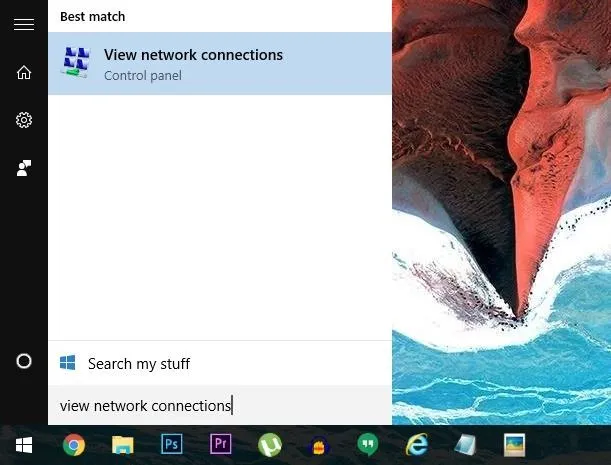
From here, find the connection labeled "Wi-Fi" in the following menu. Right-click this entry, then choose the "Status" option.

On the menu that pops up next, simply click the "Wireless Properties" button.
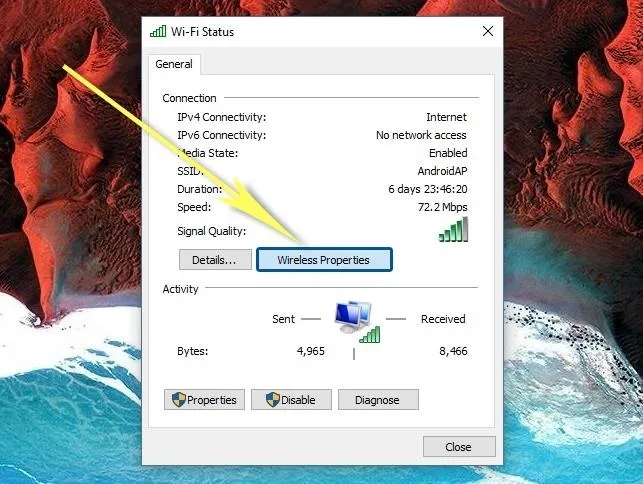
From here, another window will pop up. Head over to the Security tab in this window, then tick the box next to "Show characters." Once you've done that, the Wi-Fi network's password will be visible plain as day.

2. Mac OS X Method
If you have a MacBook or any other Apple computer and it's currently connected to this Wi-Fi network, finding the saved password is easy. First, open the Finder app, then click the Applications entry in the left-hand pane. From here, open the Utilities folder in the main window.
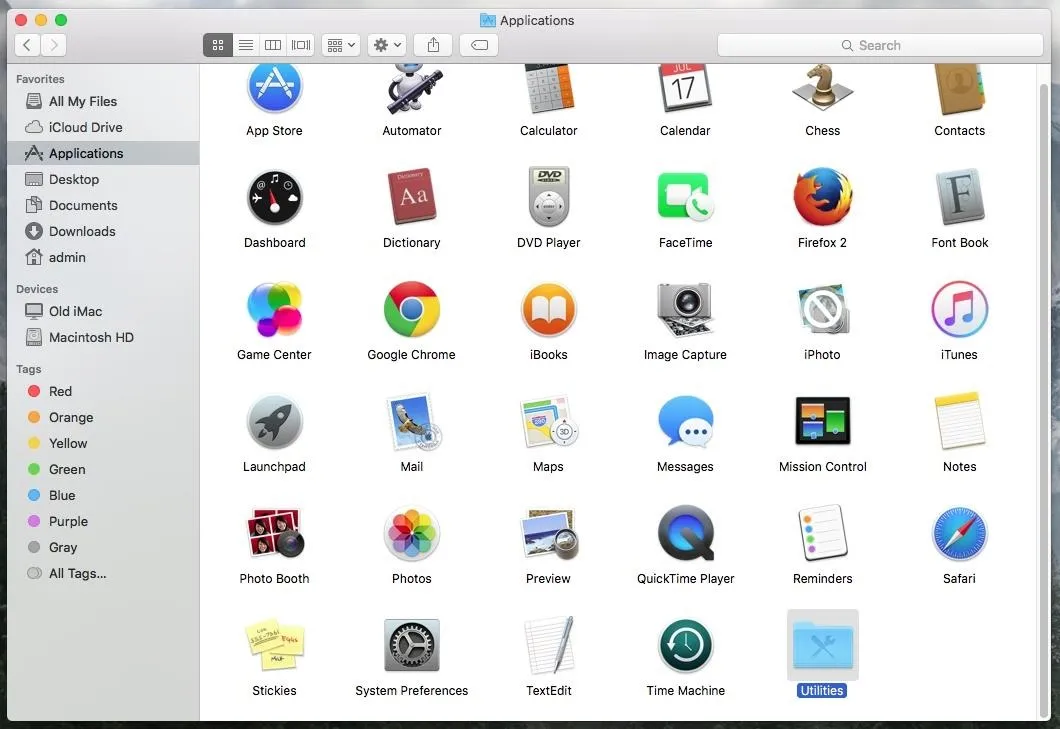
Next, launch the "Keychain Access.app" utility, which has an icon that looks like a set of keys.
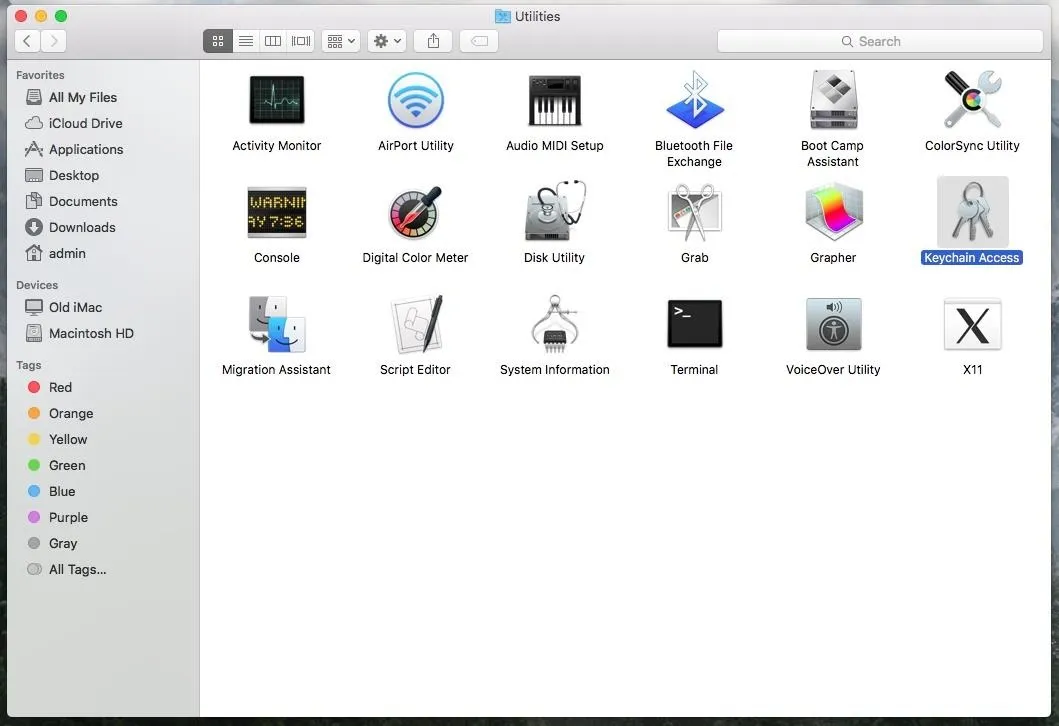
From here, make sure "System" is selected and "Passwords" is highlighted as the category in the left-hand pane. Next, simply locate your router in the list, then double-click the entry.
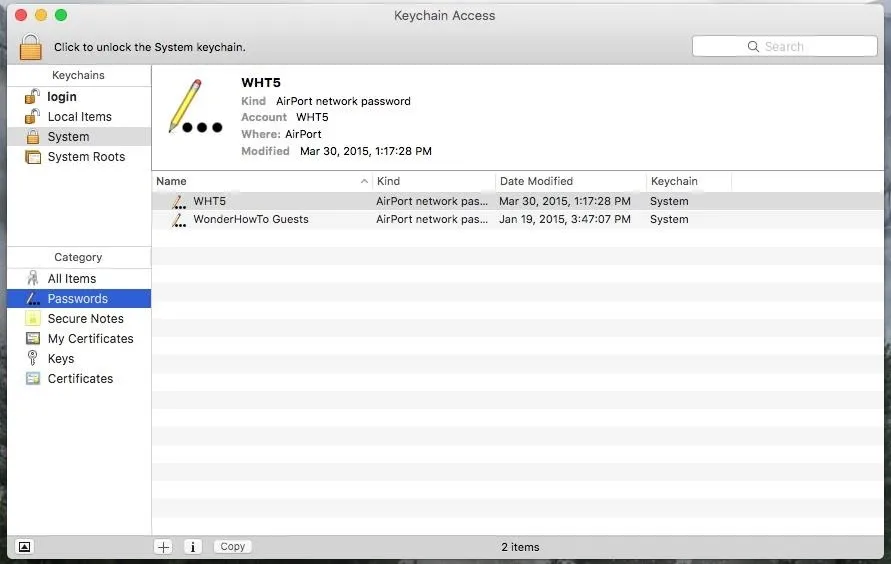
In the window that pops up next, tick the box next to "Show password," and your Wi-Fi password will be displayed. You will probably have to input your admin username and password in order to unlock it.
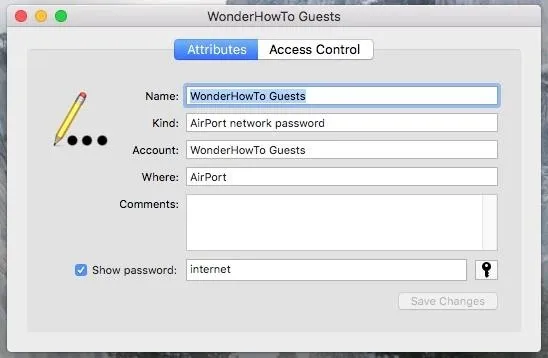
3. Android Method
Android doesn't allow you to view saved passwords natively, but if you're a rooted user, a simple and effective app will get around this issue in a few simple taps. The app is called WiFi Key Recovery, and I've covered it in detail with a full tutorial, so head to the link below for more information.
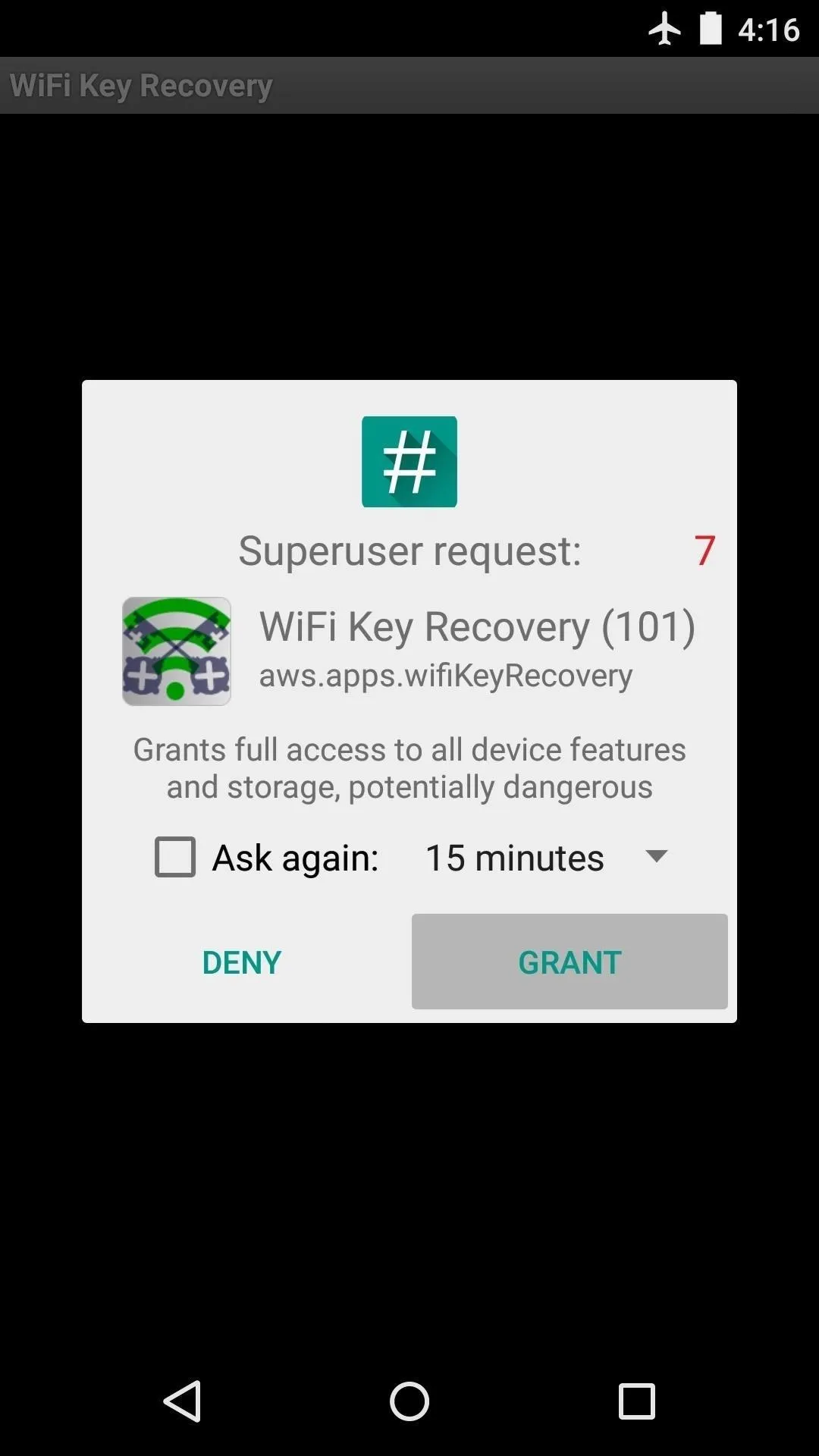
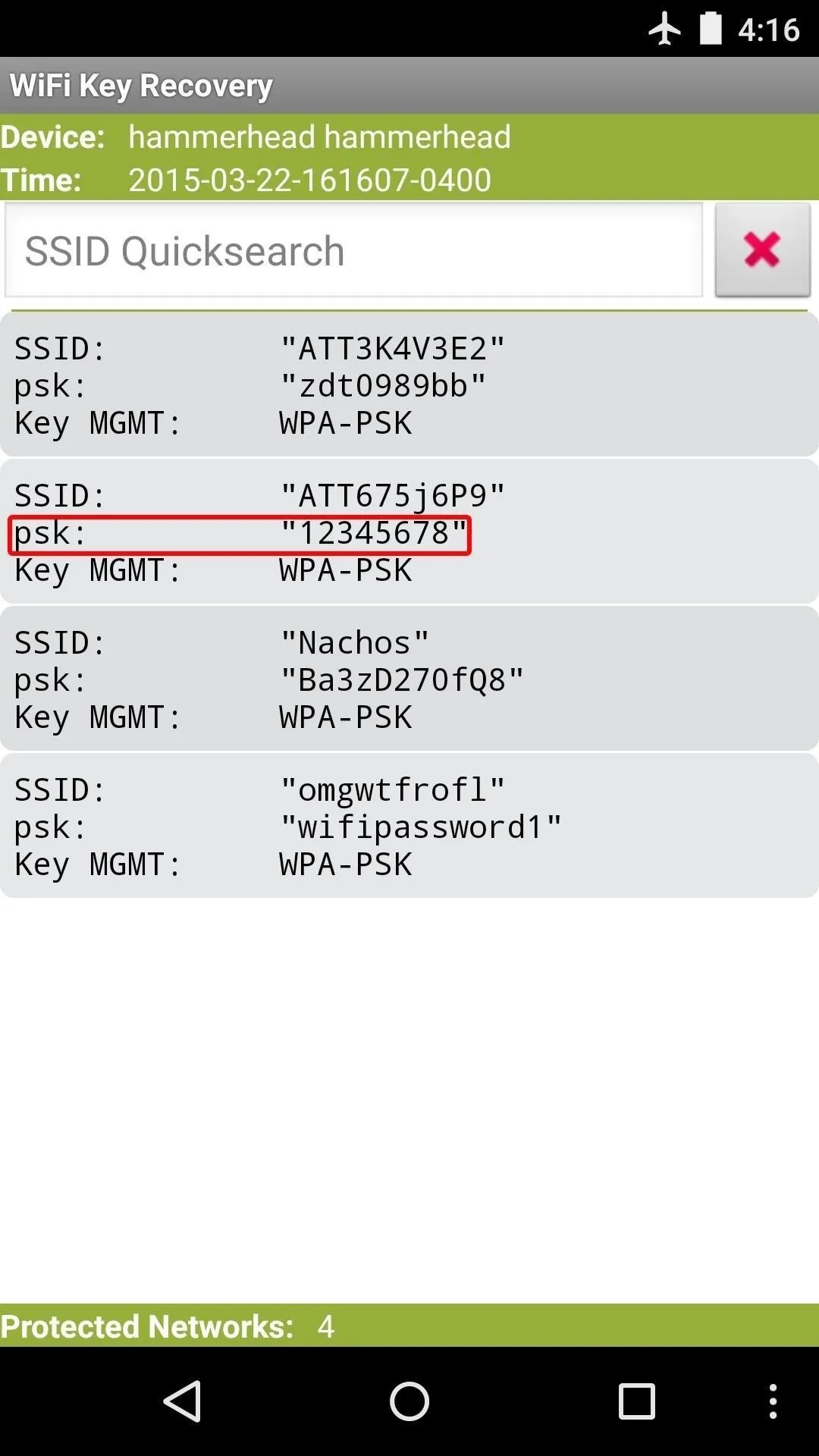


4. iOS Method
Note that there is no way to view saved Wi-Fi passwords on an iPhone—unless you're jailbroken. If you're jailbroken, then you can use a Cydia app like NetworkList to view your stored Wi-Fi passwords, which works for iOS 6 and higher.
5. Router Method
If you have a router from your internet provider, chances are it has the default network name and password printed right on the router's label somewhere (look for SSID or ESSID, and WPA, WPA2, etc.). This only works if you haven't changed the default login information (which you should have!), so skip below for a way to get your Wi-Fi password.
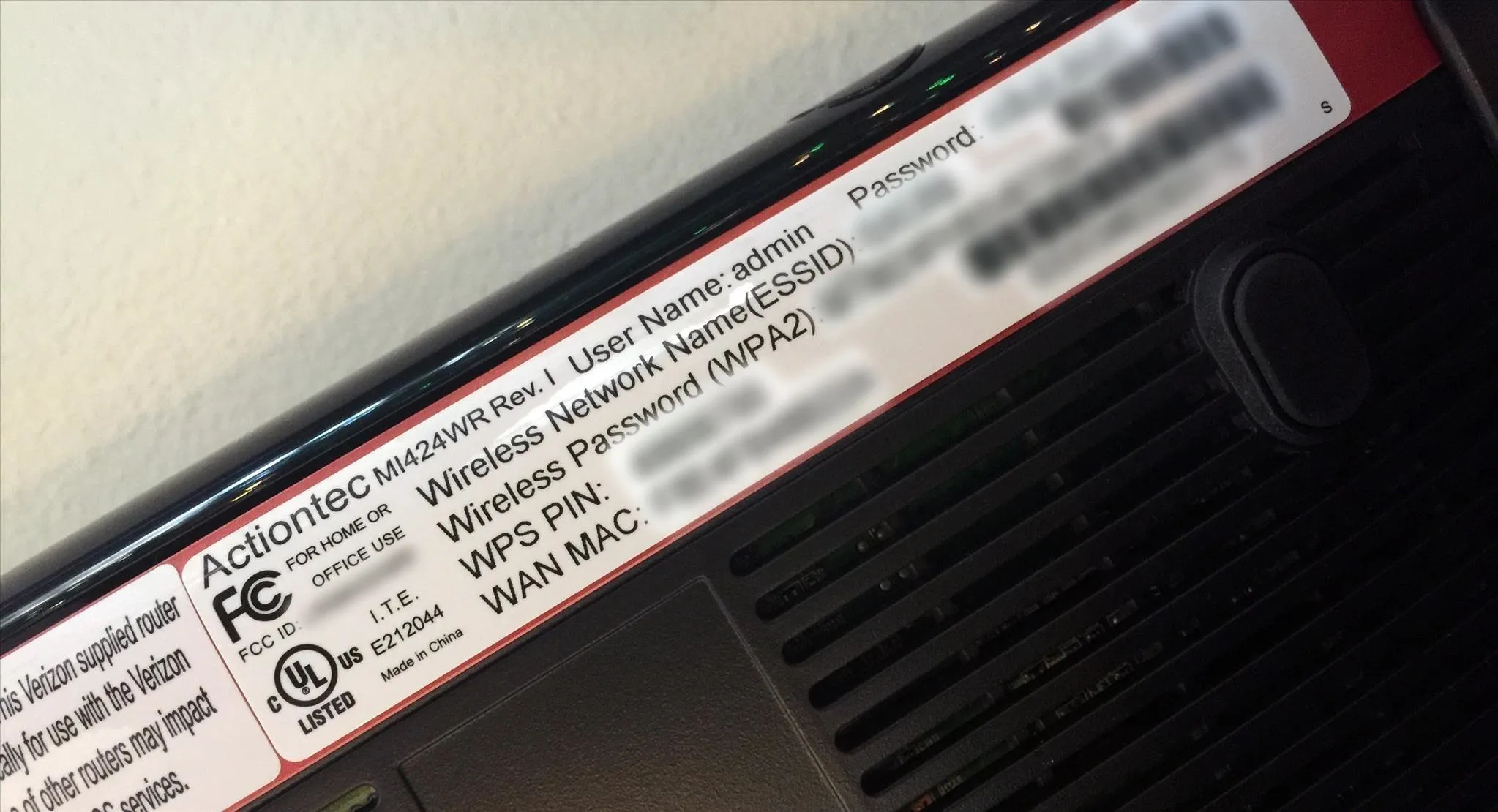
6. Router Logon Method
For this next method to work, your computer will need to be connected directly to your router with an Ethernet cable if you're not already connected to it via Wi-Fi. Once you've taken care of that, if necessary, simply enter your router's IP address into any web browser. For all common router brands, one of the following 3 addresses should work, but note that if you've manually changed your router's default IP address, you'll have to enter that instead:
- 192.168.0.1 (Netgear, D-Link, Belkin, and more)
- 192.168.1.1 (Netgear, D-Link, Linksys, Actiontec, and more)
- 192.168.2.1 (Linksys and more)

Once you've typed in your router's address, you'll be prompted to enter the user name and password. If you already know this information, go ahead and type in in now.
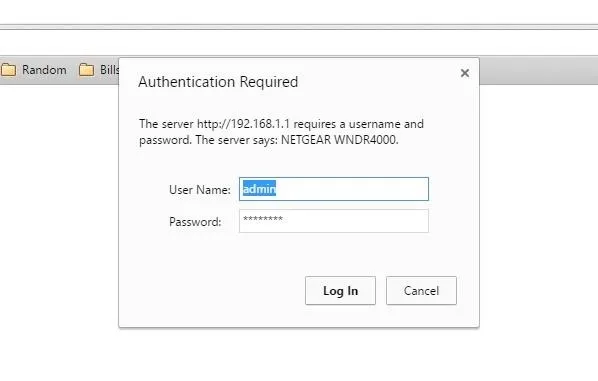
If you're not sure about your router's login information, chances are it's still set to the default. For most routers, you can find the default login information printed on a sticker on the bottom or side of the unit. Look for "user name" and "password," and don't confuse it with the network name and password, if that's on it, like mentioned in the section above. Type this information into the popup on your browser to log in.
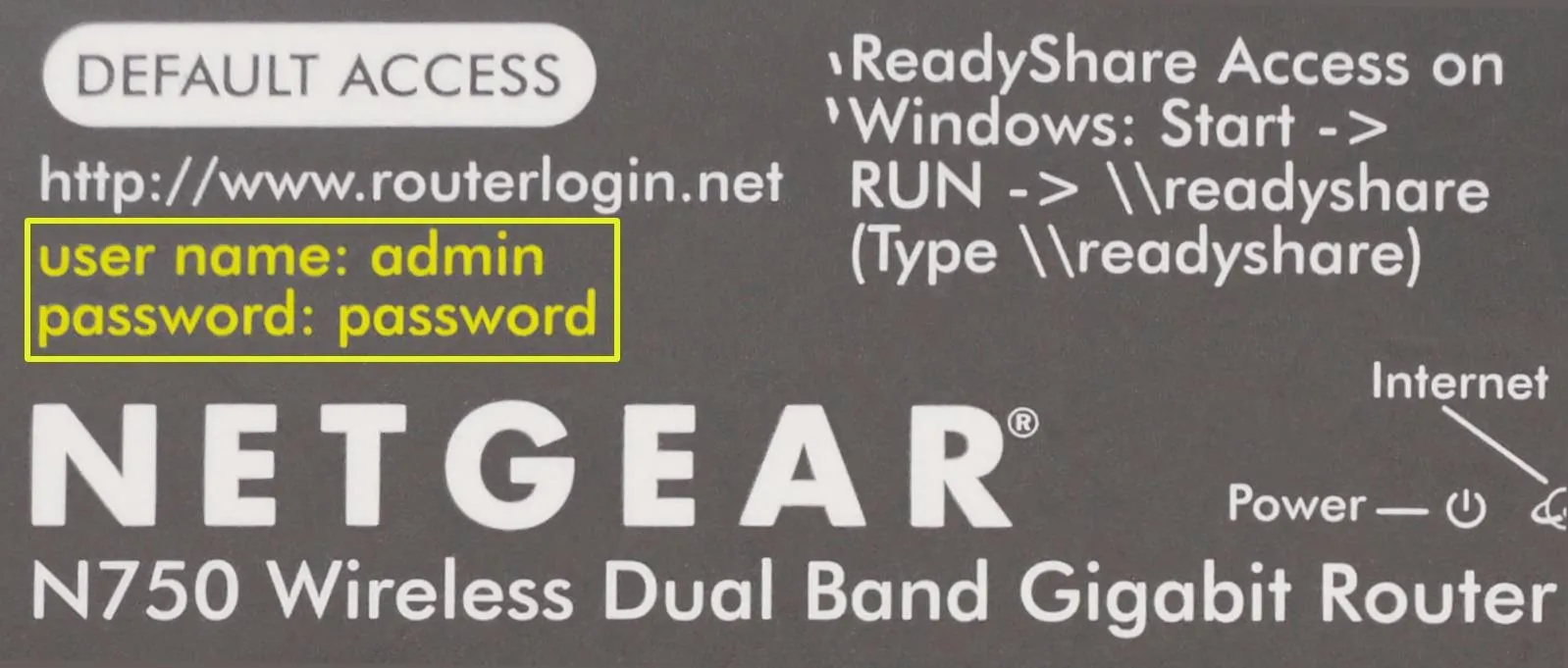
Once you've logged into your router, you'll be greeted by a pretty straightforward interface. This interface will vary depending on your router, though, so you may have to poke around a bit to find the information you're looking for.
With most routers, there should be an entry labeled either "Wireless" or "Wi-Fi." Click this entry, then you should see your Wi-Fi network's password (or "passphrase") listed in plain text.

7. Router Reset Method
If you're not able to log into your router for any reason, a last resort method for connecting to your Wi-Fi network would be to reset your router to its factory settings. Keep in mind, though, that getting your router and Wi-Fi network set up again after resetting may require that you have a computer physically connected to the router via Ethernet.
To reset your router, look for a small button labeled "Reset" or "Restore Factory Settings." In some cases, you may need a paper clip or safety pin to access this button if it is recessed. Press and hold this button for 5 seconds, then release.

Next, give your router up to 5 minutes to restore its factory settings. When it's done with this process, you should be able to log into your router with any computer that is connected via Ethernet, which will allow you to enter a new Wi-Fi password of your choosing. For more information on logging into your router, see the "Router Logon Method" section above.
8. Hacking Methods
If you want to learn the hottest skill of the 21st century, you could try and use one of the many hacking techniques to "break" into your own Wi-Fi router and get the password. Of course, you will probably need internet access in order to do this, so it may not be feasible in your situation. Still, if you're interested in checking out the many ways the Wi-Fi can be hacked, check out Null Byte's section on Wi-Fi hacking. If nothing else, it's good motivation to use a really good password for your hotspot.
Save Your WiFi Password More Easily
Want to make your Wi-Fi password easier to recall? I suggest using an app like LastPass or 1Password to save a note that can be accessed on any device that the apps are installed on (these options may cost money). If you don't want to pay, you can simply add it to a private document in Dropbox that you can access from any of your devices, or if you're not worried about security, in any note-taking app that works across your devices. (In an iOS 9.3 update for iPad, iPhone, and iPod touch, you'll be able to protect Notes with a passcode of Touch ID.)
You could also create a QR code that can be scanned to log into your Wi-Fi hotspot, which is a great alternative to typing in lengthy passwords each time—and even greater for guests.





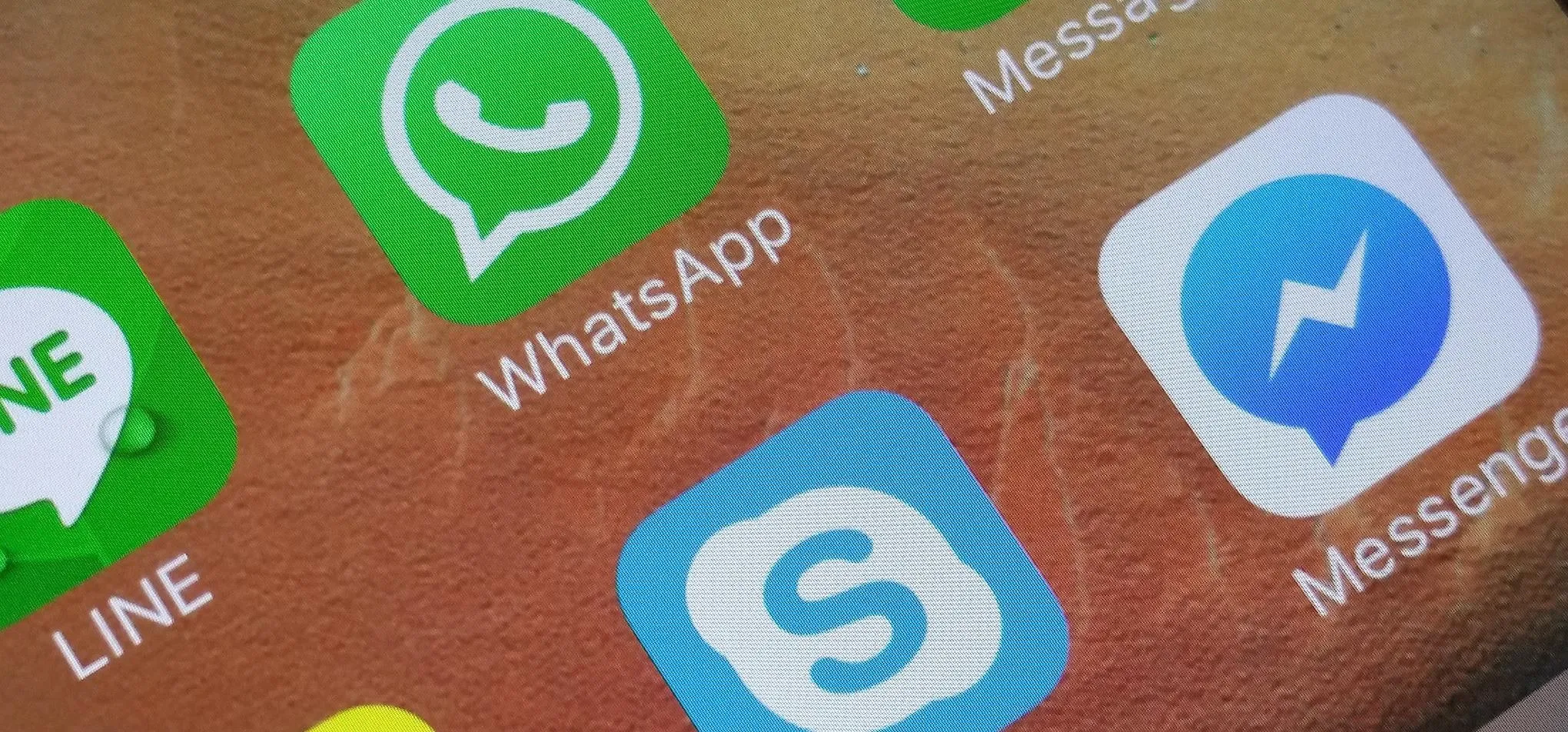














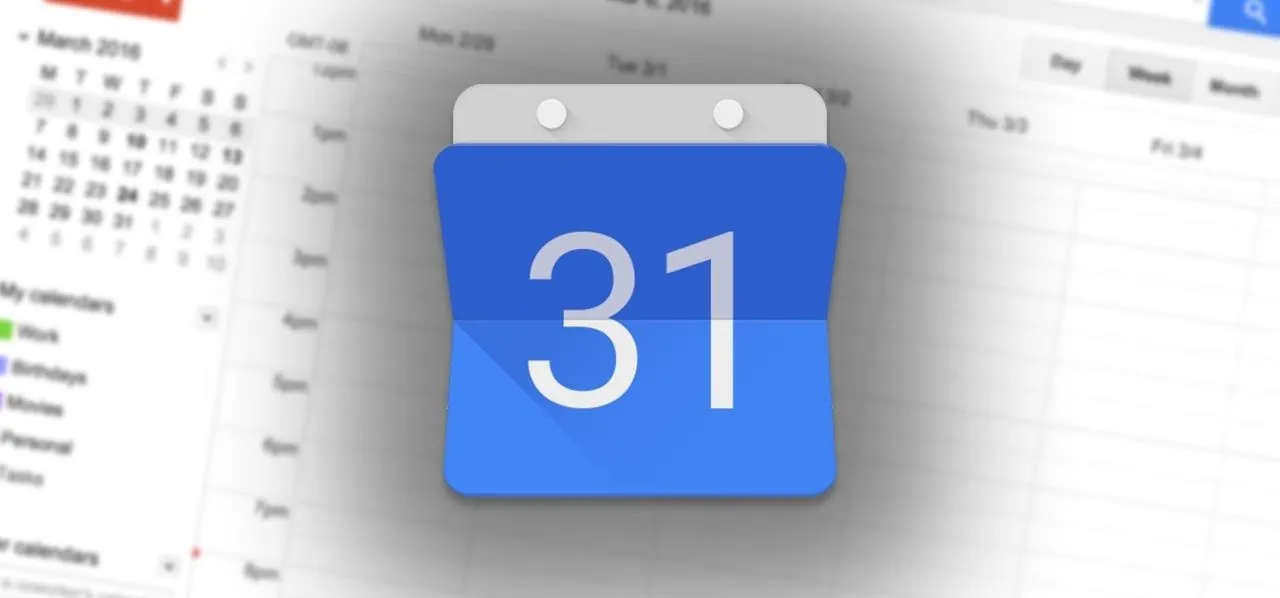
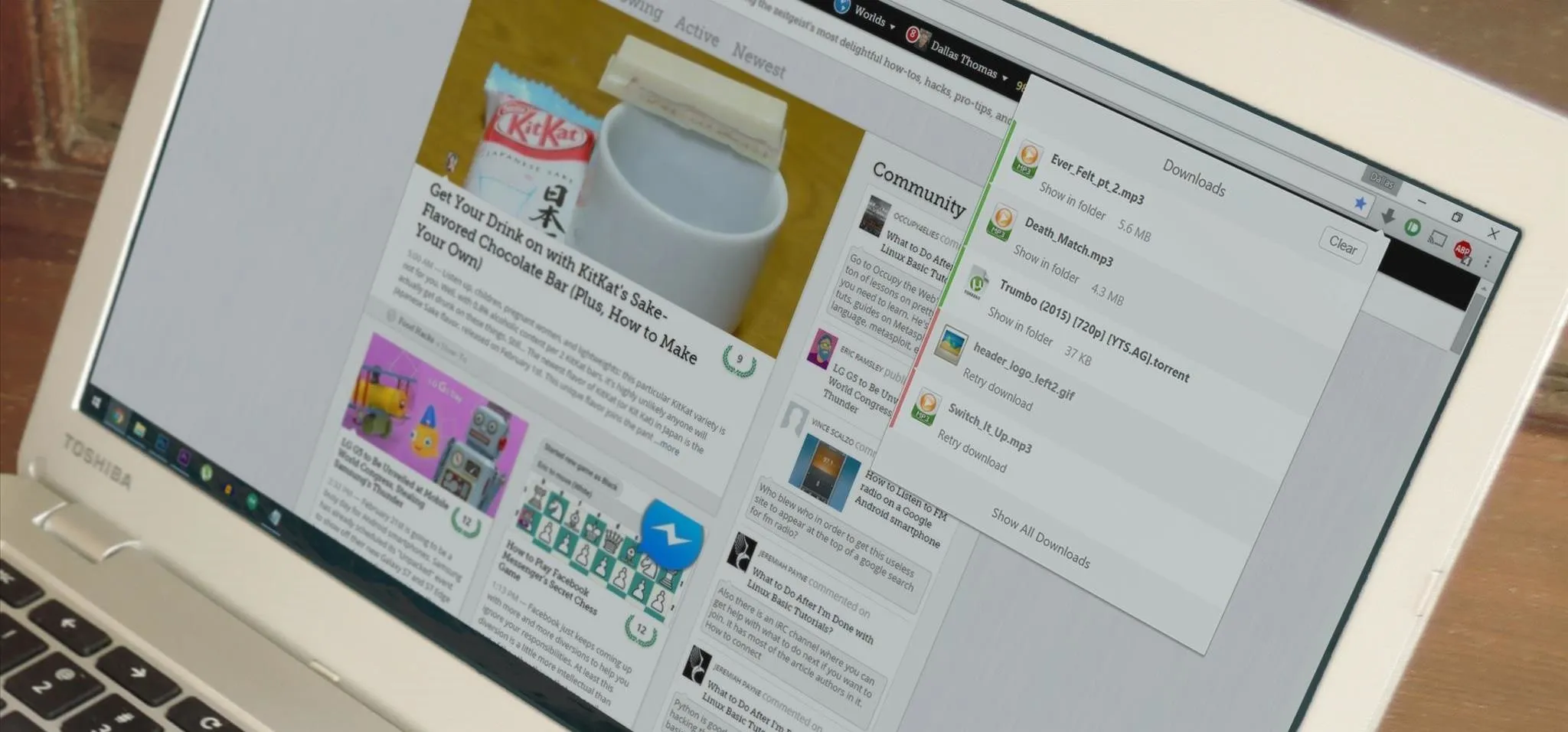

Comments
Be the first, drop a comment!